
Tracking the right lead generation metrics is essential to optimizing your marketing funnels and driving growth.
Without measuring your lead generation metrics and KPIs, it become a difficult task to determine how well your strategies are performing or where improvements are needed.
Knowing which metrics to focus on can help you generate higher-quality leads, which in turn can increase your overall conversions.
In this post, we’ll dive into 10 important lead generation metrics and KPIs that you should monitor closely. Plus, by the end of the article, you’ll learn how to generate SEO leads directly from your website to fuel your business growth.
As always, we've sampled a few leading digital marketrs and agency founders to give us their insights on the top lead generation metrics to track and measure. Thanks to the following contributors for their insights:
- Ross Plumer, CEO and Founder at RJP.design, New York, United States
- Joshua Fleming, Founder at Local Digital Buzz, Floriday, United States
- Kevin Watts, Founder and President of Raincross, California, United States
- Stephen Maitland, Marketing Director at Media Kynect, Flintshire, Wales
- Julie Ginn, VP of Global Revenue Marketing at Aprimo, Illinois, United States
- James Dooley, SEO Expert and Speaker, Manchester, England
- Peter Murphy Lewis, CEO & Fractional CMO at Strategic Pete, Kansa, United States
Why Track Lead Generation Metrics?
Measure Campaign Effectiveness
Tracking lead generation metrics helps you determine which marketing campaigns are driving the most leads and conversions. This insight enables you to invest more in successful strategies and improve or cut underperforming ones.
Optimize Marketing Spend
By monitoring metrics like cost per lead (CPL) and return on investment (ROI), you can allocate your budget more effectively, ensuring that you're spending on channels that deliver the best results.
Identify High-Quality Lead Sources
Not all leads are created equal.
Tracking lead quality metrics allows you to focus on the lead sources that yield the most conversions.
Lead quality is particularly important to ensure the sales team is spending time wisely.
At RJP.design, we implemented lead scoring, which helped prioritize the most promising leads, resulting in a 20% boost in sales efficiency.
- Ross Plumer, Founder at RJP.design
Improve Conversion Rates
By analyzing conversion rates at different stages of the funnel, you can identify bottlenecks and optimize your lead nurturing process to boost conversions.
Refine Target Audience
Tracking metrics like demographic data and source of leads helps you better understand your audience. This information allows you to fine-tune your targeting strategies for more precise outreach.
Predict Future Growth
Monitoring lead generation KPIs over time gives you the ability to forecast future performance.
This helps with setting realistic growth goals and planning your marketing strategy accordingly.
Lead Generation Metrics to Track
1. Website Traffic
Website Traffic is often the first lead generation metric to track because it serves as the foundation for evaluating the success of your campaigns.
Without traffic, there are no leads, so it's essential to understand how many people are coming to your website and where they’re coming from.
By tracking website traffic, you can assess whether your marketing campaigns, SEO efforts, or paid ads are bringing in potential leads.
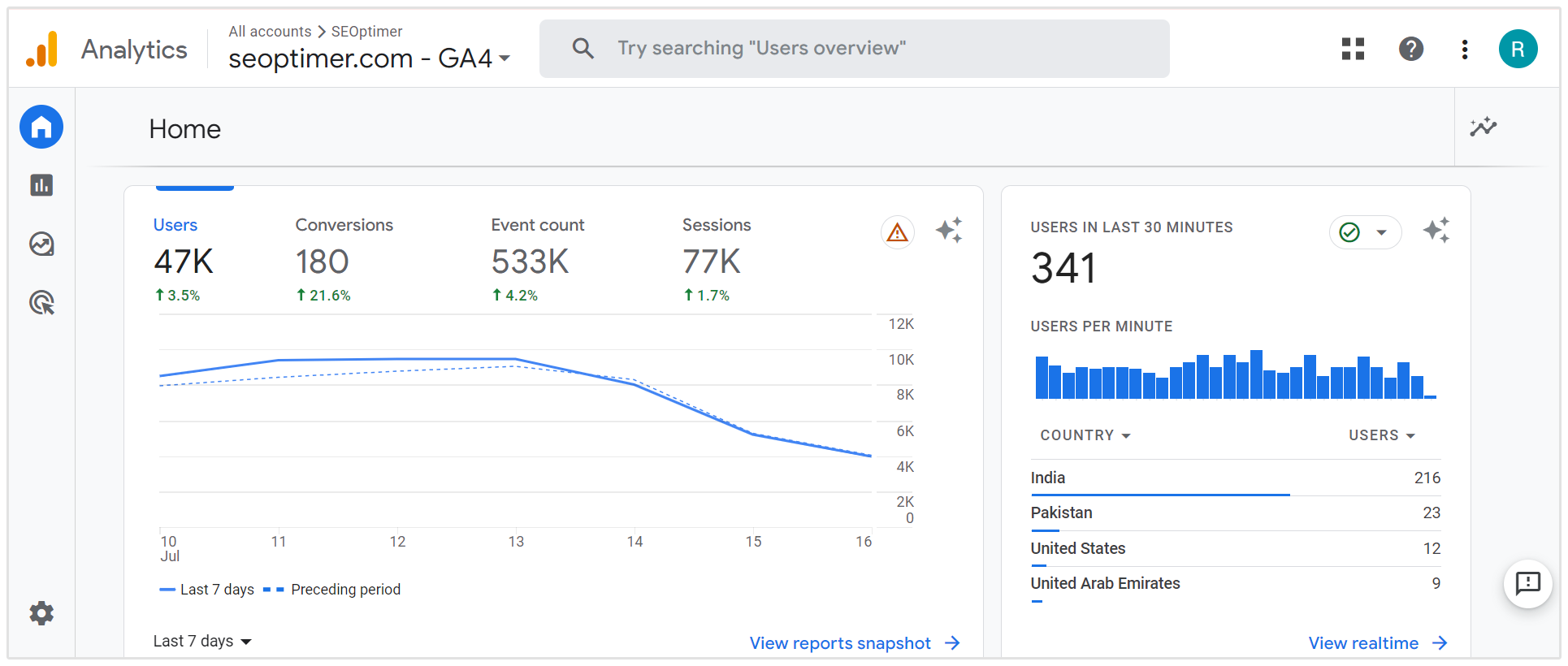
One of the easiest and most accurate tools to track changes in website traffic is Google Analytics.
It gives you detailed insights into the number of visitors, traffic sources, and even the behavior of users on your site.
Monitoring web traffic throughout the lifetime of your lead generation campaigns helps you identify trends and opportunities for improvement, ensuring that your strategies are consistently driving quality traffic.
2. Bounce Rate
Bounce rate refers to the percentage of visitors who land on your website and leave without interacting with any other pages.
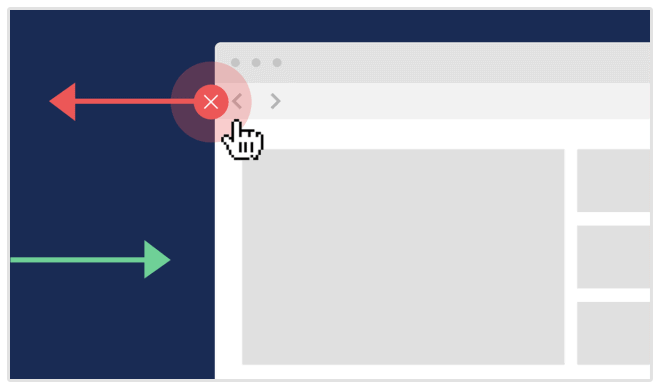
Essentially, it measures how often people “bounce” off your site after viewing just one page.
A high bounce rate can indicate that your website isn’t engaging or relevant enough for visitors, which can hurt your lead generation efforts.
Monitoring bounce rates helps you understand how well your landing pages, content, and overall user experience are performing. If your bounce rate is high, it could mean that the page isn’t aligned with the visitor’s expectations, or the content isn’t compelling enough to encourage further exploration.
Reducing bounce rates can help keep visitors on your site longer, increasing the chances they’ll convert into leads.
You can easily track bounce rates using Google Analytics (GA). GA provides detailed reports on bounce rate by page, allowing you to see which pages are performing well and which ones need improvement.
Just navigate to the Landing page section under Engagement in your Google Analytics dashboard.
You might have to add Bounce rate to the report. To do that, just click on the Pencil icon in the top right, then add Bounce rate under the Metrics tab.
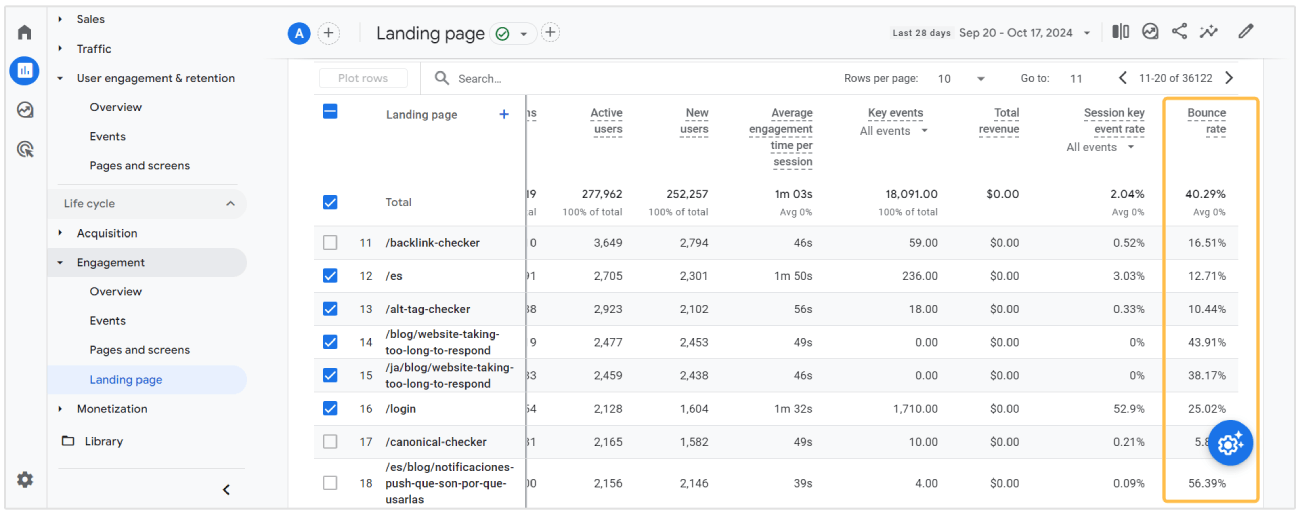
3. Number of Leads Generated
The number of leads generated is one of the most critical lead generation metric for any campaign.
This metric directly measures how many potential customers have shown interest in your product or service by providing their contact information through forms, sign-ups, or other lead capture methods.
Tracking this metric allows you to gauge the overall success of your lead generation efforts—if you’re not generating leads, your campaign isn’t delivering results.
This metric is essential because it directly correlates to your sales pipeline. The more leads you generate, the more opportunities you create for your sales team to convert them into paying customers.
Monitoring the number of leads generated helps you assess whether your marketing campaigns are effective at driving interest and if adjustments need to be made.
To track this metric, you can use tools like Google Analytics, integrated with your website’s forms or CRM.
You can also use lead tracking tools that automatically capture and record leads in a database. Many CRMs and marketing platforms, such as HubSpot or Salesforce, also offer built-in lead tracking features that allow you to monitor lead generation performance in real-time.
![]()
4. Customer Acquisition Cost
Customer Acquisition Cost (CAC) is the total cost associated with acquiring a new customer.
This includes expenses like marketing, advertising, sales efforts, and any other costs directly tied to your lead generation campaigns.
The formula to calculate CAC is simple: divide the total marketing and sales spend by the number of new customers acquired during a specific time period.
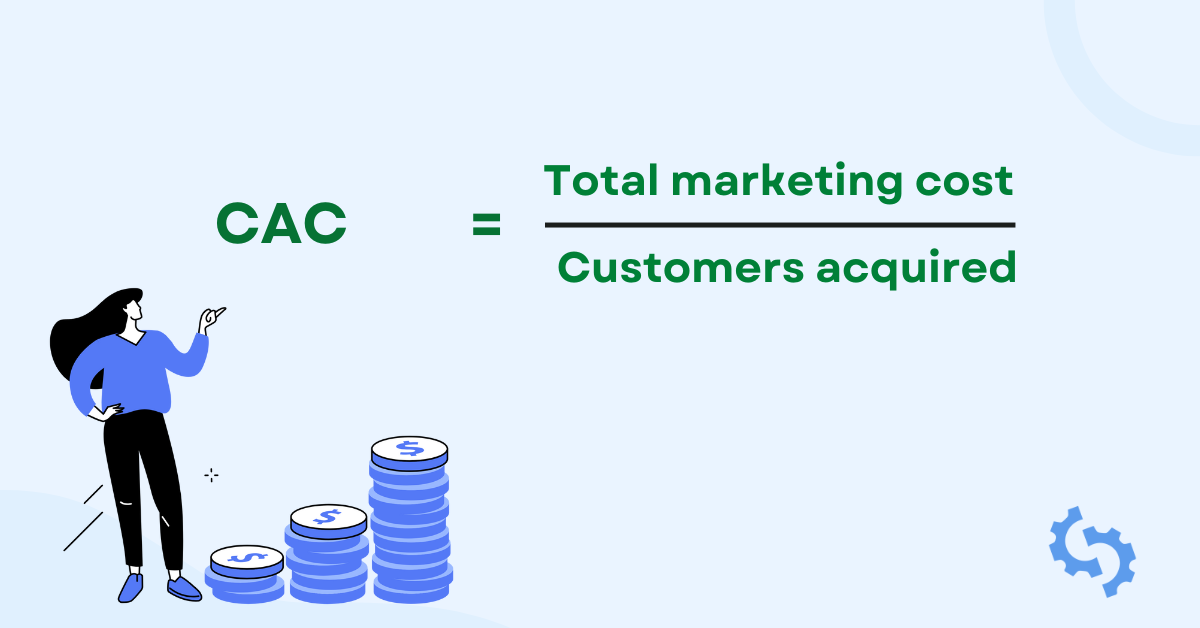
Tracking CAC is essential for understanding the efficiency and profitability of your lead generation campaigns. By monitoring this metric, you can determine if your campaigns are cost-effective or if you're spending too much to acquire new customers.
A high CAC means you’re paying more to get customers than what they are potentially worth, which can hurt your overall profitability.
On the other hand, a low CAC indicates that your campaigns are running efficiently, allowing you to maximize your return on investment (ROI).
Calculating your CAC is similar to checking the pulse of your business. Measuring how much your business is spending to acquire customers can determine the vital next steps for your company.
- Sam Kellett, Head of Content at Bloomreach
Regularly tracking and analyzing Customer Acquisition Cost helps you optimize your lead generation strategies by identifying areas where you can cut costs or improve efficiency.
Tools like your CRM or marketing platforms, as well as financial reporting software, can help you track and calculate CAC effectively.
Inbound leads tend to be easier (and cheaper) to convert into paying customers. If your CAC is too high, you might need to optimize your lead generation methods.
5. Customer Lifetime Value
Customer Lifetime Value (CLV) represents the total revenue you can expect from a customer over the entire duration of their relationship with your business. It’s a projection of how much a customer is likely to spend on your products or services, from their first purchase to their last.
The formula for calculating CLV typically involves multiplying the average purchase value by the average number of purchases over a given period, then factoring in the customer’s retention rate.
Tracking CLV is important for lead generation because it helps you understand the long-term value of acquiring a customer. While it’s essential to focus on generating leads, it's just as important to ensure that these leads translate into high-value, long-term customers.
I also prioritize tracking customer lifetime value (CLV) as it informs long-term marketing strategies and guides resource allocation.
- Julie Ginn, VP of Global Revenue Marketing, Aprimo
A high Customer Lifetime Value means your business is building strong relationships with customers who are likely to make repeat purchases and generate ongoing revenue.
This metric is crucial when paired with Customer Acquisition Cost (CAC), as it allows you to compare how much you're spending to acquire a customer versus how much revenue that customer is likely to generate over time.
If your CLV is significantly higher than your CAC, your lead generation efforts are on the right track. On the other hand, if your CAC is higher than your CLV, adjustments are needed to improve profitability.
6. Cost Per Lead
Cost Per Lead (CPL) is a key metric that measures how much it costs to acquire a single lead through your marketing efforts.
It’s calculated by dividing the total marketing and sales spend by the number of leads generated during a specific period.
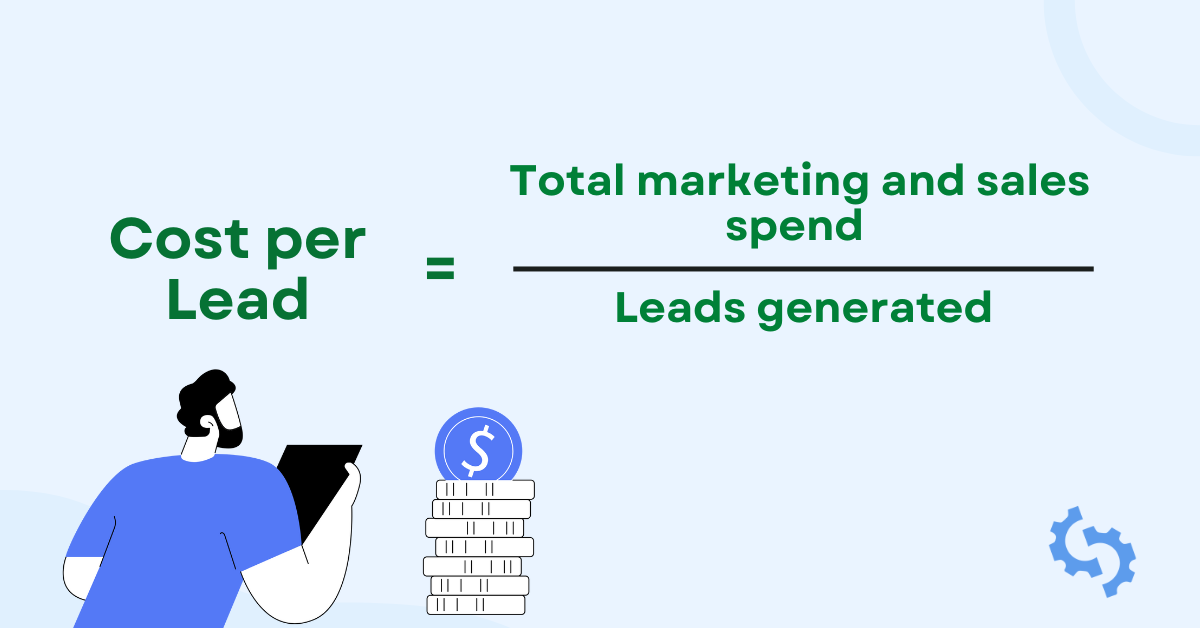
Tracking CPL is crucial because it provides a clear view of the efficiency and cost-effectiveness of your lead generation campaigns. A lower CPL indicates that your campaigns are performing well in terms of generating leads without incurring high costs.
On the other hand, a high CPL suggests that you may need to optimize your campaigns to reduce costs or improve lead quality.
Lower CPL means more budget for scaling strategies that fuel growth.
- Joshua Fleming, Founder at Local Digital Buzz
CPL is particularly important when comparing different marketing channels or campaigns. By monitoring this metric, you can identify which platforms or strategies are providing leads at the lowest cost, allowing you to allocate your budget more effectively.
Understanding your Cost Per Lead helps ensure that your lead generation campaigns are not only bringing in leads but doing so in a financially sustainable way.
Most marketing platforms, including Google Ads, Facebook Ads, and CRMs, provide built-in CPL tracking features to help you monitor and adjust your campaigns accordingly.
7. Conversion Rate
Conversion rate measures the percentage of visitors who take a desired action on your website, such as filling out a form, signing up for a newsletter, or making a purchase.
In lead generation campaigns, the conversion rate typically refers to the percentage of visitors who turn into leads by completing a form or other lead capture method.
Conversion metrics are critical for understanding lead value.
- Kevin Watts, Founder and President of Raincross
A high conversion rate means that your website is engaging and persuasive, encouraging visitors to take the next step in the buyer’s journey. On the other hand, a low conversion rate suggests that there may be issues with your landing page, messaging, or user experience that need to be addressed.
Tracking how many of your leads actually turn into customers or take the desired action is what shows how effective your strategy really is.
As James Dooley, SEO expert and speaker notes:
You can have a hundred leads, but if only one converts, that’s a problem.
By regularly monitoring this metric, you can make data-driven decisions to improve the elements on your website or landing page that may be hindering conversions, such as form design, calls to action, or page load speed.
Google Analytics and most CRM platforms make it easy to track conversion rates by measuring the percentage of visitors who complete a defined action.
8. Return on Investment (ROI)
Return on Investment (ROI) measures the profitability of your lead generation campaigns by comparing the revenue generated from leads to the costs involved in acquiring them.
It’s one of the most critical metrics to track, as it tells you whether your marketing efforts are generating a positive return or if you’re spending more than you’re making.
Tracking ROI is essential for understanding the overall effectiveness of your lead generation strategies.
Stephen Maitland, Marketing Director at UK-based agency, Media Kynect, notes that they not only track ROI as a standalone metric, but also the return on investment for each individual lead source, which helps them prioritize which channels drive the best results for their business and clients.
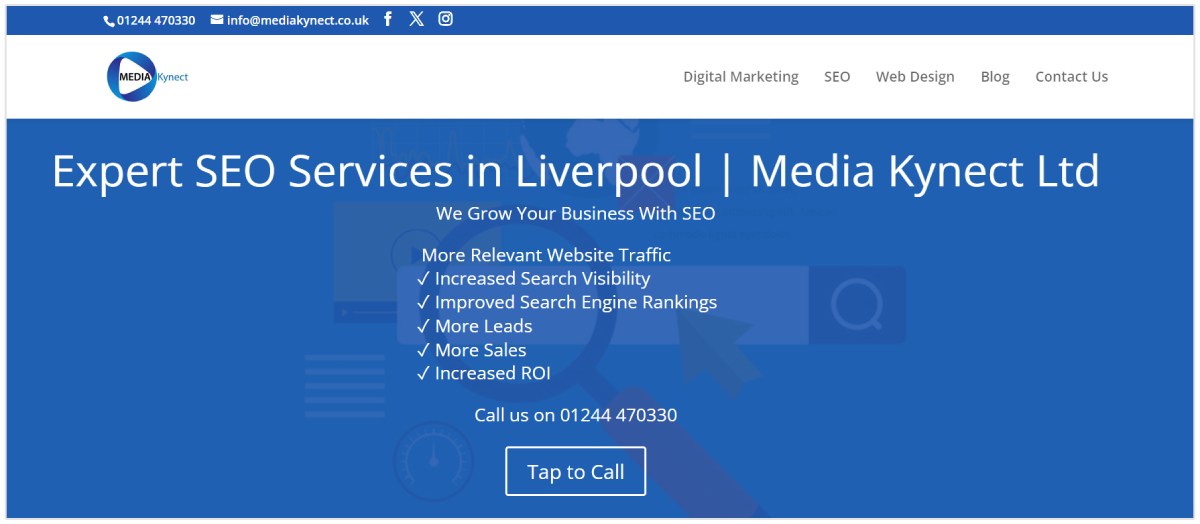
A positive ROI means that your campaigns are profitable and that you’re generating more revenue than you’re spending. Conversely, a negative ROI indicates that adjustments need to be made, whether by lowering costs or improving the quality of leads.
By regularly monitoring ROI, you can ensure that your marketing budget is being used effectively and make data-driven decisions on where to allocate resources.
It also helps you identify which channels or campaigns are providing the highest return, allowing you to optimize your strategy for maximum profitability.
9. Return on Ad Spend (ROAS)
Return on Ad Spend (ROAS) is a key metric that measures the effectiveness of your advertising campaigns by calculating how much revenue you earn for every dollar spent on ads.
This metric is particularly important for lead generation campaigns that involve paid advertising, such as Google Ads, Facebook Ads, or LinkedIn Ads.
Tracking ROAS helps you determine whether your paid ad campaigns are generating a positive return and allows you to see which ad channels or campaigns are most profitable.
Monitoring ROAS is critical because it gives you a clear view of how well your advertising budget is being utilized.
A high ROAS indicates that your ads are efficient in generating revenue, while a low ROAS suggests that you may need to optimize your ad targeting, messaging, or budget allocation to improve performance.
Most advertising platforms, including Google Ads and Facebook Ads, provide built-in tools for tracking ROAS. You can also use analytics and marketing platforms to integrate ad spend with revenue data, allowing you to closely monitor this metric throughout your lead generation campaigns.
10. Time to Conversion
Time to Conversion refers to the amount of time it takes for a lead to move through the sales funnel and convert into a customer.
Simply, it tracks the duration from when a potential lead first interacts with your brand (e.g., filling out a form or clicking an ad) to when they complete a desired action, such as making a purchase or signing up for a service.
We all want leads to convert fast, but not every lead is ready to buy right away.
Tracking how long leads spend in your nurture campaigns tells you how effective your content is at warming them up. If they’re lingering too long, your messaging might need a revamp.
- Peter Murphy Lewis, CEO & Fractional CMO at Strategic Pete
You want to constantly be trying to bring down this metric as much as possible.
How to Generate SEO Leads from Your Website
You can generate SEO leads directly from your website by using SEOptimer's Embeddable Audit Tool. This tool allows you to embed a website audit function directly on your site, enabling visitors to input their website URL and receive a detailed SEO audit report.
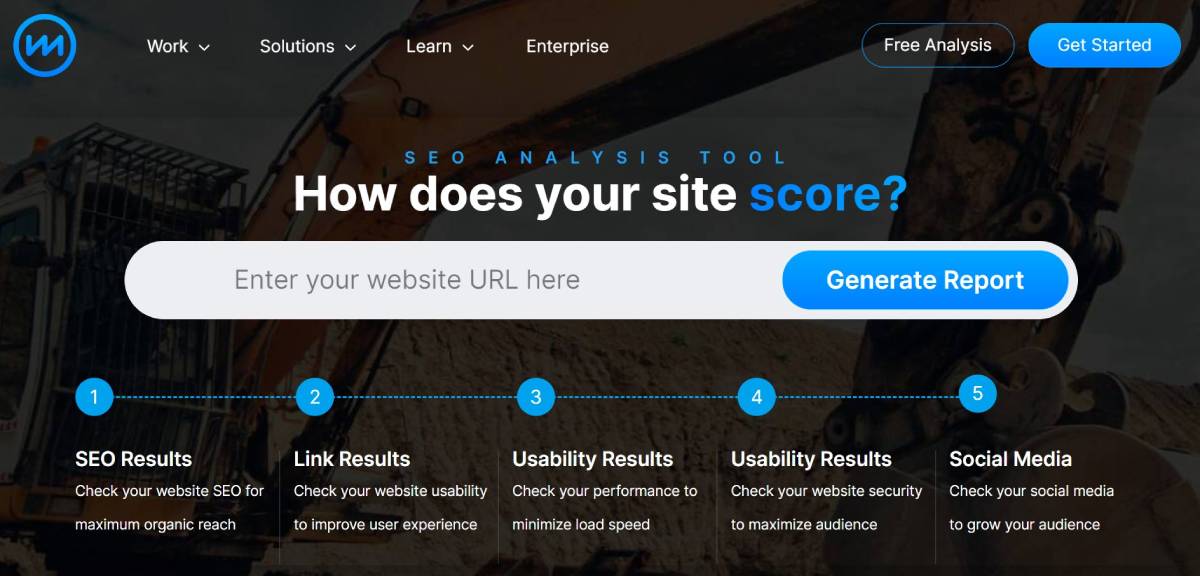
With the Embeddable Audit Tool, you not only provide valuable SEO insights to your visitors but also capture their contact details in exchange for the audit report. This can turn casual visitors into leads, giving you a steady flow of potential clients who are actively looking to improve their website's SEO.
Here's how it works:
- Visitors enter their website URL in the audit tool on your site.
- The tool provides a comprehensive SEO audit report with actionable recommendations.
- In return, you collect their email or contact details, allowing you to follow up with tailored offers or services.
The leads you collected can be found in your SEOptimer dashboard under "Leads",
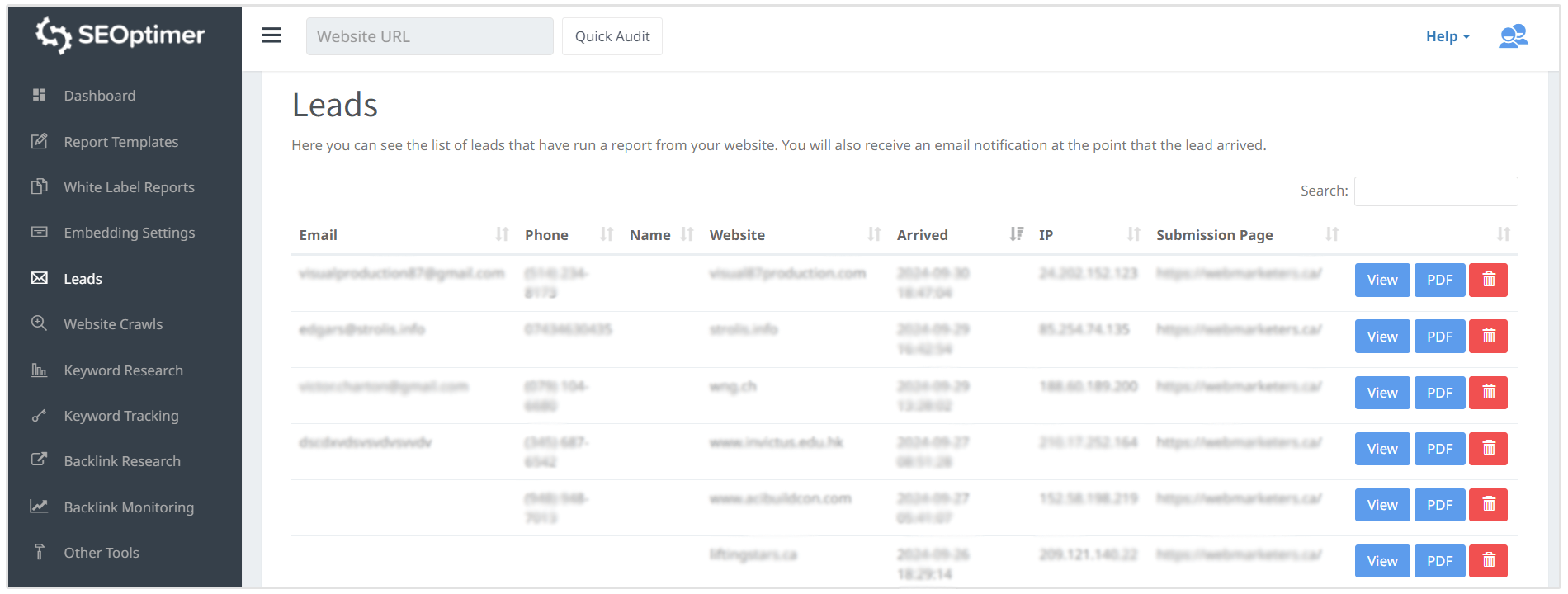
This lead generation method is effective for digital agencies because it aligns perfectly with what your target audience is looking for—SEO improvements and actionable insights.

















